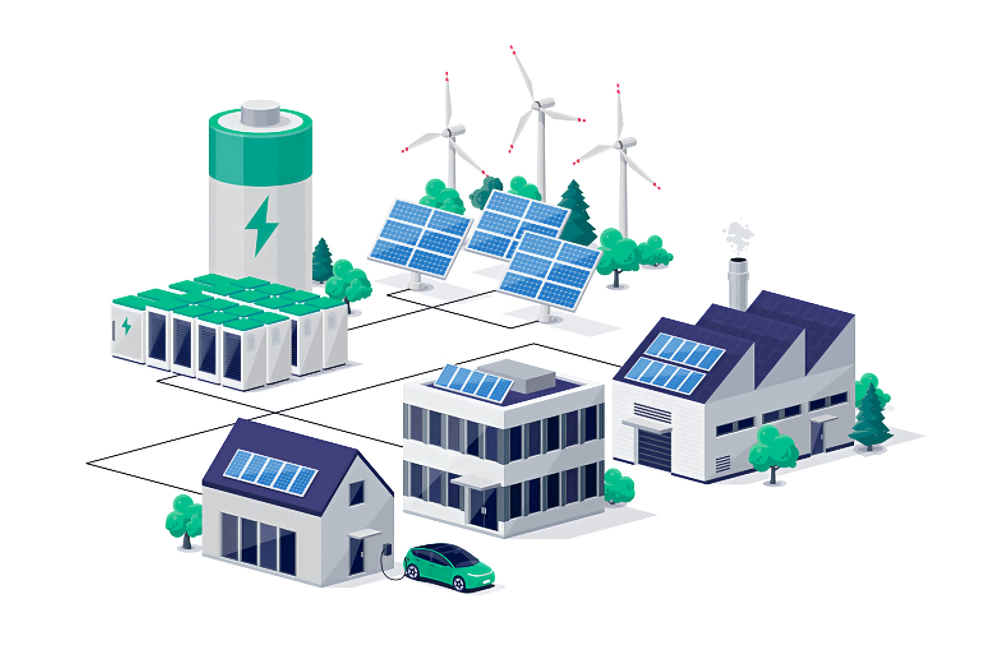As a core component of energy systems, batteries play an indispensable role. Throughout history, we’ve constantly searched for better battery technologies—from traditional lead-acid batteries to today’s lithium batteries, and potentially to future innovations like solid-state batteries, sodium-ion batteries, or other advanced “super batteries.”
Currently, the most commonly used batteries for energy storage include lead-acid, ternary lithium (NCM/NCA), lithium iron phosphate battery (LiFePO4), and lithium titanate. So why has LiFePO4 become the dominant battery for home energy storage and commercial systems?
High Safety – Resistant to Fire or Explosion
LiFePO4 batteries have a highly stable chemical structure. Their thermal runaway temperature exceeds 270°C, significantly higher than that of ternary lithium. Whether under normal operation, collision, or short circuit conditions, they are much less likely to react violently. This makes them the safest and most suitable battery chemistry for large-scale applications provided by battery energy storage system suppliers, including home energy storage and off-grid solar systems.
Long Cycle Life – Decade-Long Reliability
One of the greatest advantages of lithium iron phosphate battery systems over traditional lead-acid and other lithium chemistries is their ultra-long cycle life. Under standard operating conditions, a lifepo4 battery can last 4,000 to 6,000 cycles. That means if you charge and discharge the battery once per day, it can remain stable for 10+ years, making it ideal for both household users and battery energy storage system suppliers seeking long-term value.
Durable in Harsh Climates – Globally Deployable
Eco-Friendly & Sustainable
Lithium iron phosphate battery technology avoids the use of cobalt, nickel, and other rare or toxic heavy metals. Compared with lead-acid batteries or complex NCM chemistries, lifepo4 is more environmentally friendly. It offers stable raw material sourcing and easier recycling, supporting greener practices for manufacturers and battery energy storage system suppliers.
Conclusion
Solid-State Batteries: Replacing the flammable liquid electrolyte with a solid material promises greater safety, potentially higher energy density, and faster charging.
New Chemistries: Exploring alternatives like Lithium-Sulfur (Li-S) or Lithium-Air (Li-Air) for even higher energy density.
Silicon Anodes: Using silicon instead of graphite could significantly boost capacity.
Advanced Recycling: Developing efficient, cost-effective methods to recover valuable materials from spent batteries is paramount for sustainability — a growing priority for every battery supplier working in grid-scale and lifepo4 solutions.
Conclusion
When it comes to modern home energy storage systems, key requirements include safety, durability, cost-effectiveness, and long-term operational stability. Based on the above analysis, lithium iron phosphate battery (lifepo4) chemistry is clearly the best all-around choice.
· Lithium titanate is too expensive
· Ternary lithium is too risky
· Lead-acid is outdated
· Sodium-ion and solid-state technologies are not yet commercially viable
Only lifepo4 batteries strike the perfect balance between safety, performance, and affordability. For residential users and battery energy storage system suppliers, the choice is clear.
It’s not that other chemistries are lacking—it’s that lithium iron phosphate battery systems are simply the most suitable for home energy storage and global deployment today.
WhatsApp / WeChat / Mobile: +86 13332949210
Email: info@xihobattery.com
Website: www.xihopower.com
 +86 13332949210
+86 13332949210 info@xihobattery.com
info@xihobattery.com







 Xiho
Xiho Aug 04 2025
Aug 04 2025











